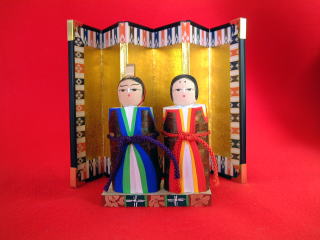
Yoshinobina ―Dolls made in Yoshino, Nara―
Many people love these simple Yoshinobina dolls and believe that owning
a Yoshinobina
doll will protect them from misfortune. There are two types of Yoshinobina;
Sakurakibori,
and Tsuchibina with Ikansokutai (ceremonial dress).
Each Sakurakibori is made from the wood of a cherry tree, and each Tsuchibina is made of soil.
The origin of Yoshinobina is from the 7th century, where Prince Ohamano came to the Yoshino Imperial villa. Baronial families decided to present him with dolls made from the wood of the
cherry tree.
In 14th century, in order to comfort the Emperor Godaigo during hard times,
the people
presented Yoshinobina dolls to him.
However, over time, the art of Yoshinobina had declined in popularity.
In early 20th century, Shinnichi Ohta referred back to some old documents
and historical
records, and so revived the lost art of Yoshinobina. Later, in 1939, Shinnichi was invited to
the San Francisco International Exposition, and performed a demonstration
of Yoshinobina
to some of the craftsmen there.
Since Shinnichi's death, his son Toyoshige has continued the tradition of producing Yoshinobina.
Incidentally, the author of "Shin Heike Monogatari", Eigi Yoshikawa,
came to Yoshinobina and
then wrote "A Volume of Yoshinobina".

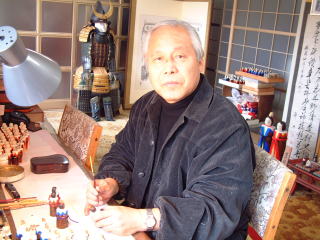
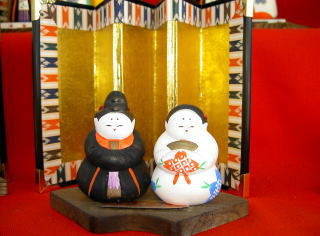
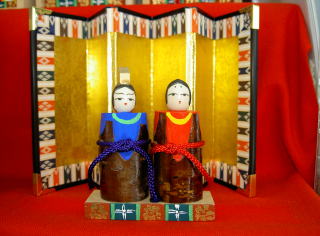
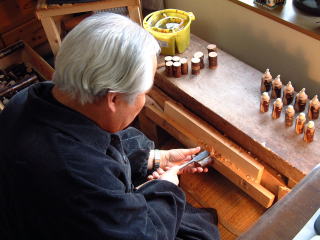
craftman Toyoshige Ohta
Sakurakibori Large
Sakurakibori Small
Tuchibina Large
Tuchibina Small
